Bug Blog
White-Eyed Drone
Beekeepers sometimes see a white-eyed drone in their hives--a genetic mutation.All drones (male) honey bees, have these spectacular wrap-around eyes that are perfect for finding a virgin queen on her maiden flight. After all, the drone's sole purpose is...
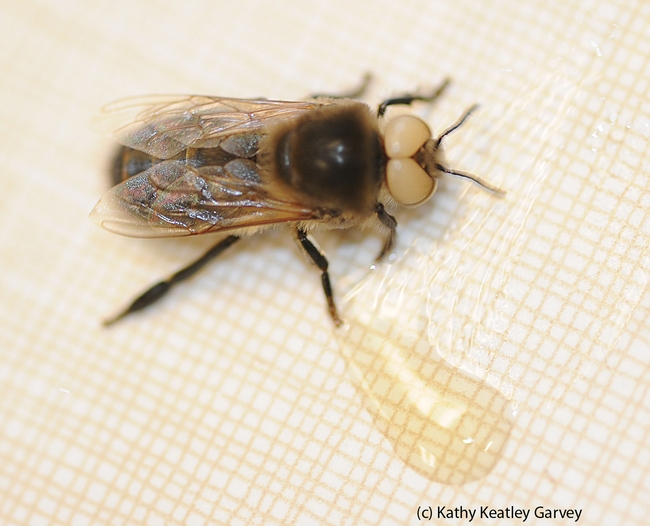
This is a white-eyed Caucasian (dark) honey bee drone. White-eyed drones are blind. In the foreground is honey. (Photo by Kathy Keatley Garvey)
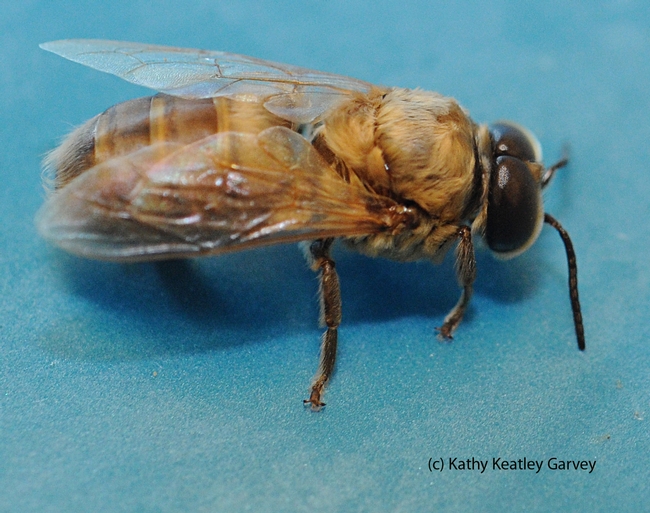
This is a normal drone (male) honey bee. (Photo by Kathy Keatley Garvey)
What's That Buzz?
So you're sitting in your yard having your morning coffee, and you get buzzed--not a buzz from the caffeine but a buzz by a carpenter bee.A male carpenter bee, Xylocopa tabaniformis orpifex, is guarding the salvia, fending off all other male suitors as...

Male carpenter bee, Xylocopa tabaniformis orpifex, in flight. (Photo by Kathy Keatley Garvey)
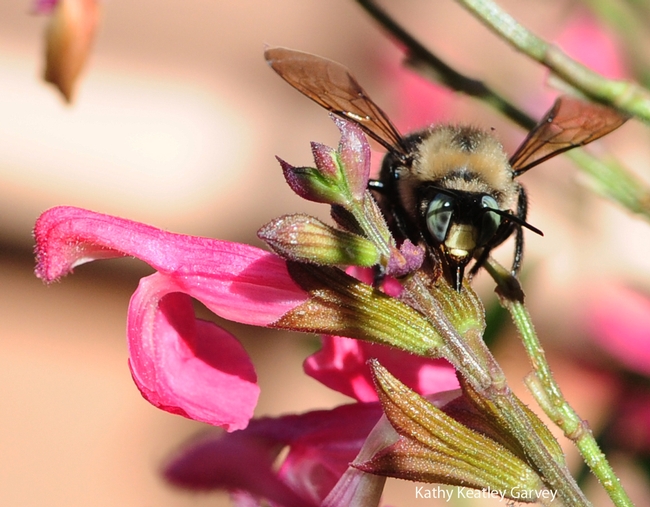
Male carpenter bee, Xylocopa tabaniformis orpifex, slitting the corolla. (Photo by Kathy Keatley Garvey)
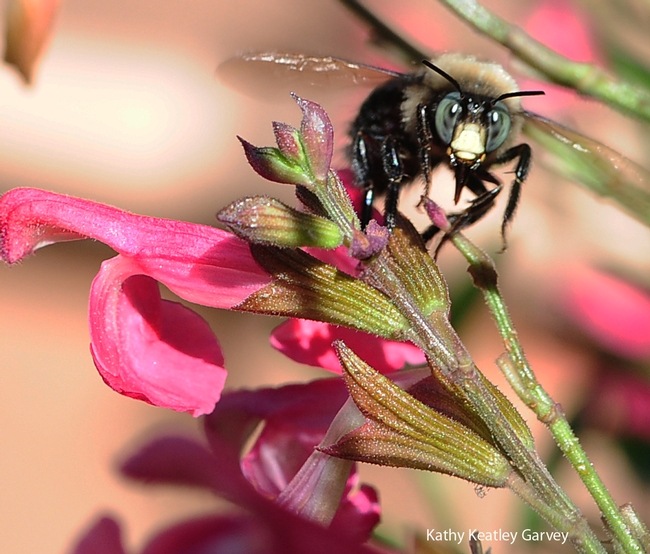
Male carpenter bee, Xylocopa tabaniformis orpifex, leaving the corolla. (Photo by Kathy Keatley Garvey)
Little Bug, Big Problem
They're tiny--about 1/5 of an inch long. They feed at night and hide during the day.There's a good reason why they're called "the menace in the mattress." The mattress is one of their hiding spots.They? Bed bugs. Parasites that feed on human blood."Bed...

Bed bug, Cimex lectularius, shown here ingesting a blood meal from the arm of a “voluntary” human host, is wreaking havoc locally, nationally and globally. (Photo by Piotr Naskrecki, published by the Centers for Disease Control and Prevention on the Wikipedia website.)
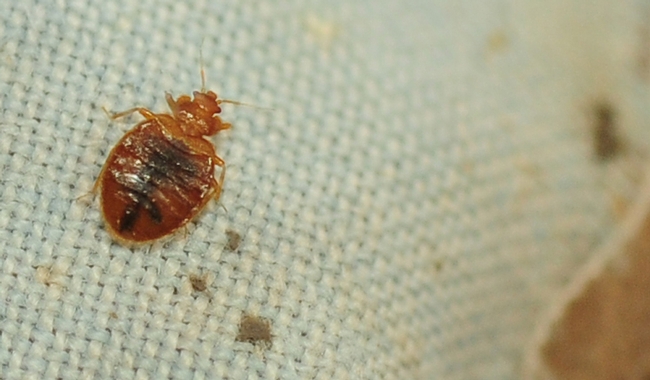
This bed bug drew a lot of attention at a UC Davis Department of Entomology display during the campuswide Picnic Day. (Photo by Kathy Keatley Garvey)
Is There a Doctor in the House?
Is there a doctor in the house? If you head over to the UC Davis Department of Entomology's displays at Briggs Hall and at the Bohart Museum of Entomology on Saturday, April 21 during the campuswide UC Davis Picnic Day, you'll find them. Bug doctors....

Bug banner at Briggs beckons. (Photo by Kathy Keatley Garvey)

Forensic entomologist Robert Kimsey as "Dr. Death." (Photo by Kathy Keatley Garvey)

Entomologist/principal editor Steve Dreistadt (red shirt) of UC IPM answers questions about insects. (Photo by Kathy Keatley Garvey)
The Sounds of a Rainforest
When you listen to a rainforest, what do you hear? What does it tell you? Those who attend the free public event, “Mentawai: Listening to the Rainforest,” on Sunday, April 22 on the UC Davis campus will find out. The unique art/science fusion program,...
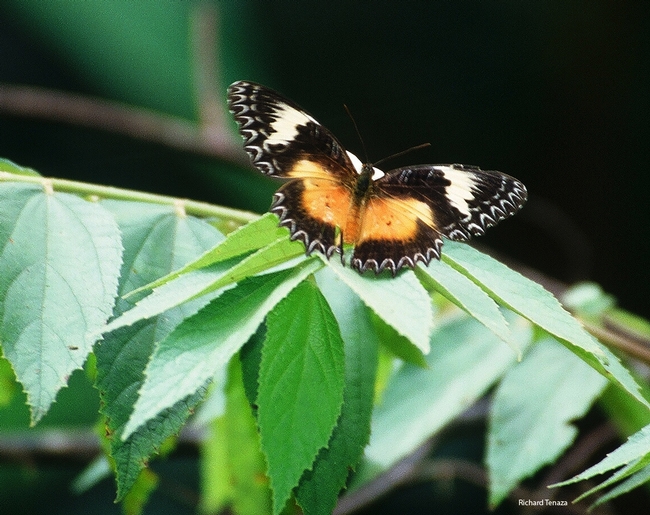
Malay Lacewing butterfly (Cethosia hypsea). Photographed by Richard Tenaza and identified by professor/butterfly expert Arthur Shapiro of UC Davis.
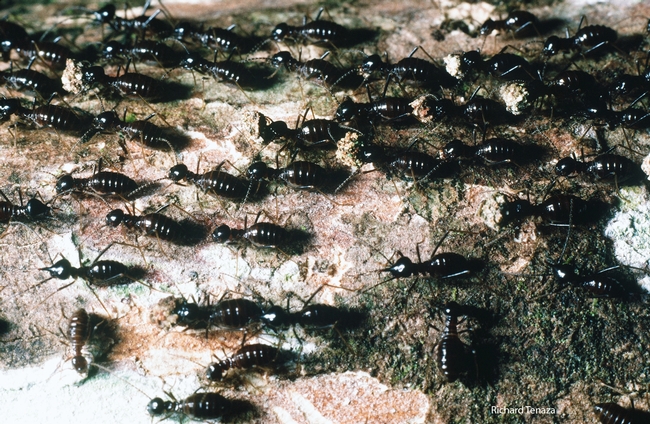
Nasute termites. Photographed by Richard Tenaza and identified by research scholar/insect photographer Alex Wild of the University of Illinois.

